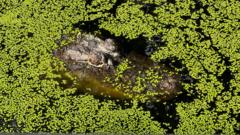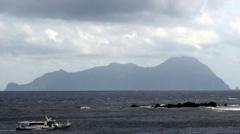As populations of saltwater crocodiles surge in Australia's Northern Territory, officials face tough decisions on keeping both people and wildlife safe, sparking debates about conservation and culling.
**Crocodile Dilemma: Balancing Conservation and Public Safety in Australia's Northern Territory**

**Crocodile Dilemma: Balancing Conservation and Public Safety in Australia's Northern Territory**
Exploring the fluctuating relationship between saltwater crocodile management and community safety in Darwin, Australia.
In Darwin, Australia, the ongoing battle between conservation efforts and public safety regarding saltwater crocodiles is increasingly nuanced. Once on the brink of extinction, saltwater crocodile populations have rebounded to an estimated 100,000 in the Northern Territory (NT) since hunting was banned in 1971. Now, rangers like Kelly Ewin are tasked with catching and managing these formidable reptiles to minimize encounters with humans in a region where being in close proximity to water means also being close to crocodiles.
The climate and geographical conditions of the NT are ideal for these apex predators, and while incidents involving fatalities caused by crocodile attacks are rare, they do occur. Local authorities are under pressure to ensure public safety without jeopardizing the recovery of the species. “Mass culling is not an option,” says Ewin, reflecting on the complexities surrounding this management strategy.
This breeding season marks a peak period for Ewin and other rangers, as crocodiles become more active. Their efforts involve checking traps multiple times a week, with removed crocodiles often being euthanized, as relocating them is not a viable option. A recent government management plan has increased the quota for approved annual kills from 300 to 1,200, underscoring a proactive approach in dealing with this growing population.
Education plays a crucial role in the crocodile management strategy. The NT government's “Be Crocwise” program educates the public on appropriate behaviors when interacting with crocodile habitats, aiming to reduce dangerous encounters. Participants in the program are taught that they are in crocodile territory, urging awareness in fishing boats and near waterways. The approach has garnered interest from other regions, such as Florida and the Philippines, looking to implement similar educational initiatives.
Despite the controversies surrounding culling discussions, saltwater crocodiles remain a notable attraction for tourism, offering an economic boost for the region. Eco-tours featuring crocodiles, such as “croc jumping” shows, have gained popularity, directly contributing to the growth of the local economy. Additionally, crocodile farming has emerged as a significant industry, with luxury brands relying on ethically sourced crocodilian skin for high-end products.
As stakeholders, including Aboriginal communities, engage in sustainable practices linked to crocodile farming, the management of saltwater crocodiles remains a deeply rooted cultural and economic issue. Traditional owners like Otto Bulmaniya Campion highlight the historical significance of crocodiles, advocating for responsible management that allows communities to benefit economically while preserving their cultural ties to these animals.
Even in a world where conservation is championed, the looming threat of crocodiles cannot be understated. As croc expert Professor Grahame Webb vividly notes, swimming in some areas poses a serious risk, emphasizing the delicate balance between living alongside a predator and managing a healthy ecosystem. The ongoing conversation around saltwater crocodiles in Australia's Northern Territory reflects a broader trend of reconciling wildlife conservation with public safety and sustainable practices.




















